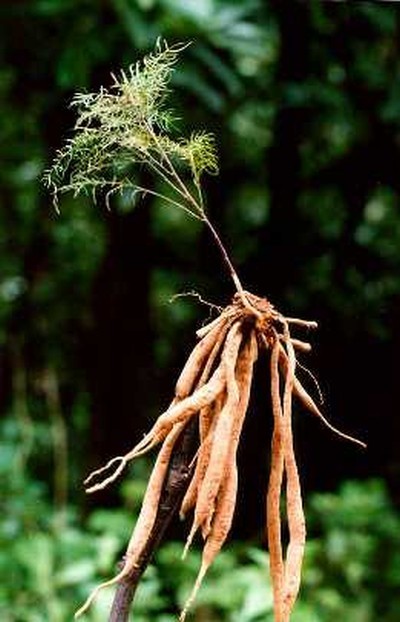
Common Name: Shatavari,
English Name: Asparagus
Botanical Name: Asparagus racemosus
Family: Liliaceae
Description: The plant grows best in tropical and subtropical dry and deciduous forests. Asparagus racemosus is distributed throughout tropical Africa, Java, Australia, India, Sri Lanka and Southern parts of China. The plant is a climber, climbs upto 1-3 m high. It is an extensively scandentspinous, much branched shrub. Roots are numerous fusiform, succulent and tuberous with a diameter of 0.5 to 1.5 cm arises as a cluster from the basal end of the stem.
Chemical Constituents: Shatavari contains a wide range of phytochemical constituents like Steroidal saponins, known as Shatvarins. Shatvarin I to VI are present. Shatvarin I is the major glycoside with 3-glucose and rhamnose moieties attached to sarsapogenin. Recently, Shatavarin V, Asparinins, Asparosides, Curillins, Curillosides have also been reported. In addition, Aspargamine, Imunoside, Racemosol and Racefuran have also been found.
Properties: Roots of Asparagus racemosus are widely used in Ayurveda as Rasayana to stimulate the immune system and as a galactogogue. Asparagus racemosus has also been used for nervous disorders, inflammation, liver diseases and certain infectious diseases. Various studies have indicated immune system enhancement properties of Asparagus racemosus root extracts and formulations.
Used in the following MATXIN products: